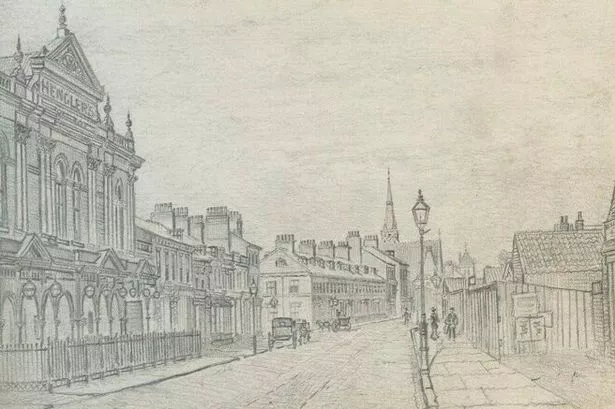
Fredrick Shultz Smith’s work consists of images of the Hull he knew in striking street scenes
Artworks by a Hull artist known for capturing visual ‘snap shots in time’ have gone on display to mark the 100th anniversary of his death. From the late 1880s Fredrick Shultz Smith – better known as F S Smith – was a familiar sight on Hull street corners, drawing images that aimed to bring to life the sights, smells and sounds of Victorian Hull.
Originally born in Worthing, he came to Hull with his parents as a young boy, spending most of his life in the old St John’s Wood area in west Hull, and was still drawing well into his sixties until he died in 1925. Now his artworks are being presented to a new audience at Hull History Centre, as part of the centenary of his death commemorations.
The centre is displaying its collection of illustrations by Smith, the majority of which remain unpublished. The street scenes, which capture many lost buildings and views, include those that were formerly in the possession of Hull antiquarian Thomas Mapplebeck, as well as others deposited with Hull’s Local Studies Library over the decades.
The collection comprises more than 800 drawings of Victorian Hull and its surrounding areas, created by Smith between 1880 and 1920. They recording many buildings and places that have long since vanished due to wartime bombing or redevelopment. Others still remain standing alongside newer properties.
Did you know that you can delve into Hull’s past with our dedicated History page? To read stories with a heritage focus, you can click here.
Smith often produced drawings to record buildings that were due to be pulled down, such as one of the old Guildhall which stood on the same site as the present Guildhall, drawn a year after it was demolished, from earlier sketches. Other images show the River Hull and the old harbour as busy waterways, packed with keels, barges, and small steamers. Meanwhile, The Princes, Humber and Queen’s Docks are also included in images.
Smith’s drawings also mark the moment when electricity came to Hull. An image shows the opening of the Hull Electric Tramway in 1899, while street scenes include new ‘arc’ electric street lights which were introduced as early as 1882. However, because carbon rods burnt out quickly, the town switched back to gas lighting after only two years.
Councillor Rob Pritchard, portfolio holder for culture and leisure said: “FS Smith’s drawings preserve a Hull that has now largely disappeared; an early Victorian town of narrow streets and surviving medieval buildings on the threshold of the great changes that Edwardian redevelopment and the Second World War would bring.
“This display at the History Centre highlights little-known views of Hull and increases our understanding of the development of the city.”
The F.S. Smith Exhibition is open now until Thursday August 28. The History Centre is open Tuesday to Thursday, 9.30am to 4.30pm and the first and third Saturday of each month, 9.30am to 12.30pm.
Want to stay up to date with all the latest event news that’s happening in and around Hull? Well look no further. Sign up to our Never Dull in Hull newsletter and get all the latest news on gigs, food and days out sent straight to your inbox.

